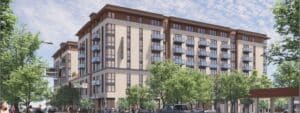John Wildermuth
Land preservation efforts in Silicon Valley and surrounding areas have had only a minor effect on housing construction, according to a new Stanford study that looks to end decades of squabbling between environmentalists and developers.
The study, published online recently in the journal Biological Conservation, found that much of the land preserved over the past 50 years would have been only marginally useful for housing.
The steep foothills and wetlands areas that make up the biggest chunks of the protected land just don’t work for large-scale developments, said Jon Christensen, executive director of Stanford’s Bill Lane Center for the American West and an author of the report.
Using a complicated measure to determine how development would have proceeded if more than 100,000 acres set aside for parks, wetlands and protected forest and wildlife areas had been left open for construction, the researchers found that only about 6.5 percent more housing units would have been built.
“In the bigger scheme of things, this would not be a huge addition to the housing stock,” Christensen said.
High-end housing
About 41 percent of those 51,000 new dwellings would have been in areas where the typical house is on a half-acre lot and sells for $1.5 million, which wouldn’t provide the affordable housing the Bay Area sorely needs.
The area studied by Christensen and his co-authors, sociology graduate student Carrie Denning and landscape ecologist Robert McDonald, extends south from San Francisco International Airport to the edge of Morgan Hill and includes Fremont in the East Bay.
Christensen began putting together the study in 2008, when he learned that a nonprofit group in San Francisco, the GreenInfo Network, had a database listing all protected land in the Bay Area. He and his co-authors combined that information with the U.S. Geological Survey’s information on Bay Area development and came up with the findings.
“When we looked at what would have happened, I was surprised to see such a strong result,” he said, showing that conservation and development in Silicon Valley and extended areas have never been mutually exclusive.
Christensen and local conservationists hope the study will provide the final word in the long-running argument about whether land preservation efforts have been the driving force behind the region’s soaring housing costs.
Over the years, developers and business groups have complained that converting so much land into protected open space has made what’s left so expensive that young families can no longer move into the area.
“Now we have the research that says that’s not really true,” said Michele Beasley, a senior field representative of the Greenbelt Alliance. “We have an affordable housing problem, which won’t be solved by million-dollar homes on hillside lots.”
Watershed protection
Decades of efforts to protect watersheds, preserve wildlife habitat and provide open space for local residents has played a major role in making the region a place where people want to live, added Bettina Ring, executive director of the Bay Area Open Space Council, a coalition of 55 local conservation groups.
“Quality of life is very important to people in this area,” she said. “Now we can be very strategic about what land is protected and make targeted decisions about where we need to build housing.”
With the housing industry in a disastrous slump, it’s no time to be fighting about efforts to preserve land that might not serve as a site for housing, said Cheryl O’Connor, head of the Home Builders Association of Northern California.
“There aren’t many builders building anything right now, since there have only been 128 permits for homes in the South Bay this year,” she said. But what demand that exists is for multifamily, high-density developments, she said.
That demand for urban housing close to jobs and transit has helped bring developers and conservation groups together. Recently, for example, they worked to successfully overturn Pleasanton’s tough rules limiting housing construction.
“We just need to ensure that housing can get built,” O’Connor said. “We have to allow affordable housing and it has to go somewhere.”
###
http://www.sfgate.com/cgi-bin/article.cgi?f=/c/a/2010/04/04/BAUL1CN0OC.DTL



